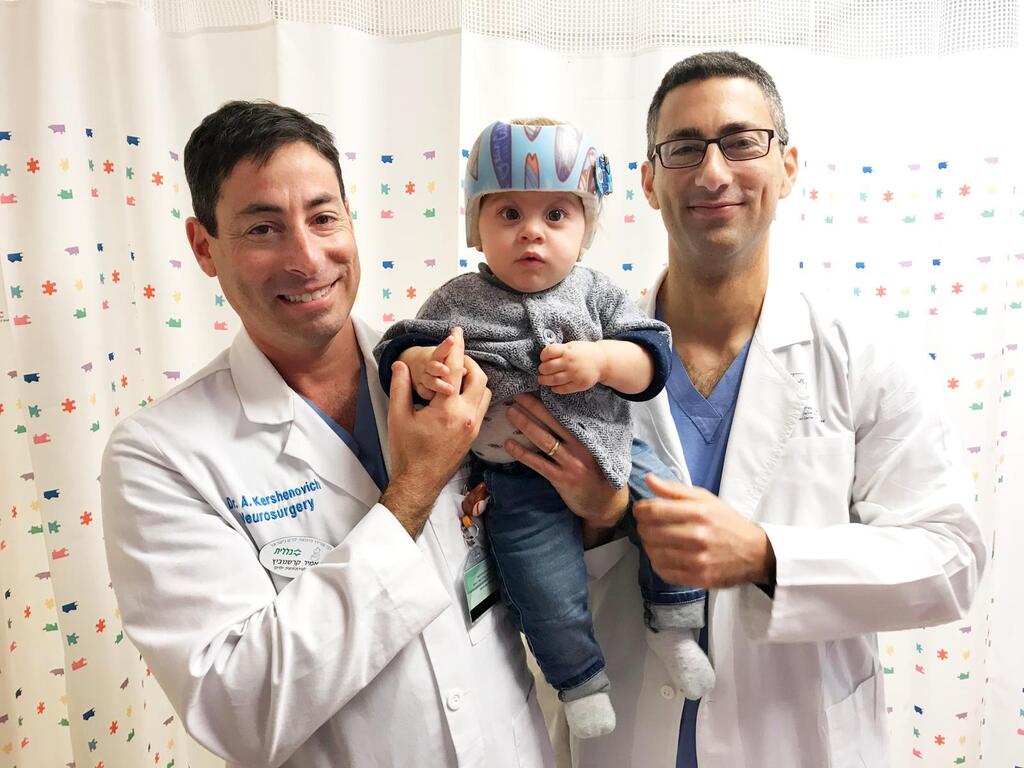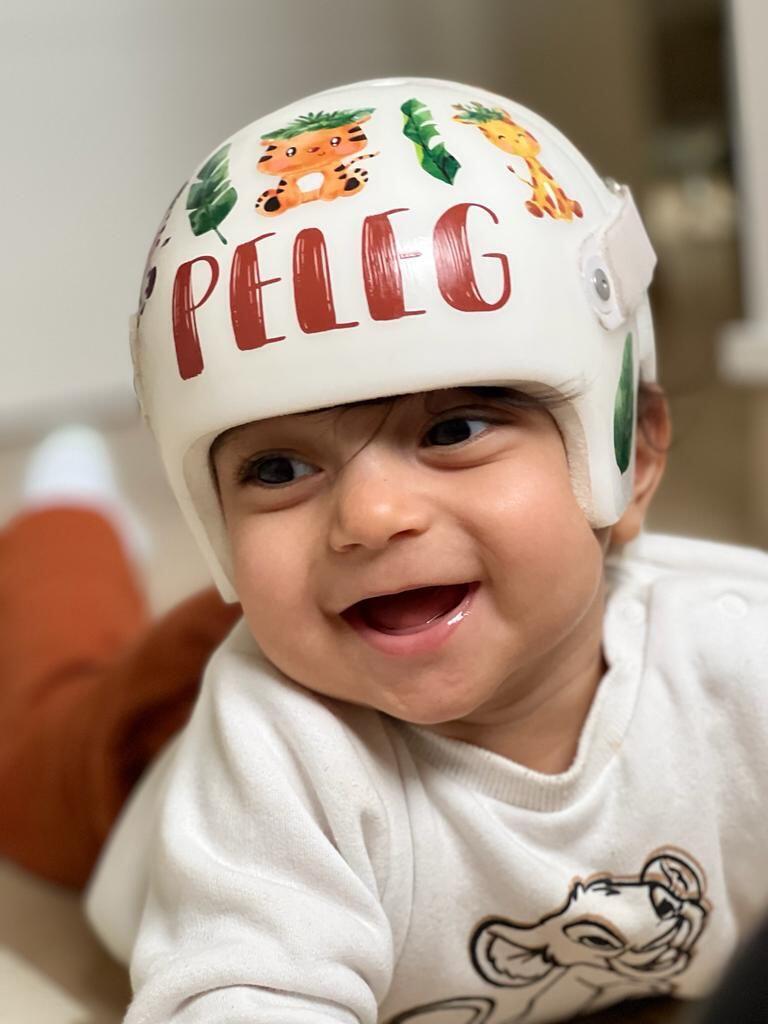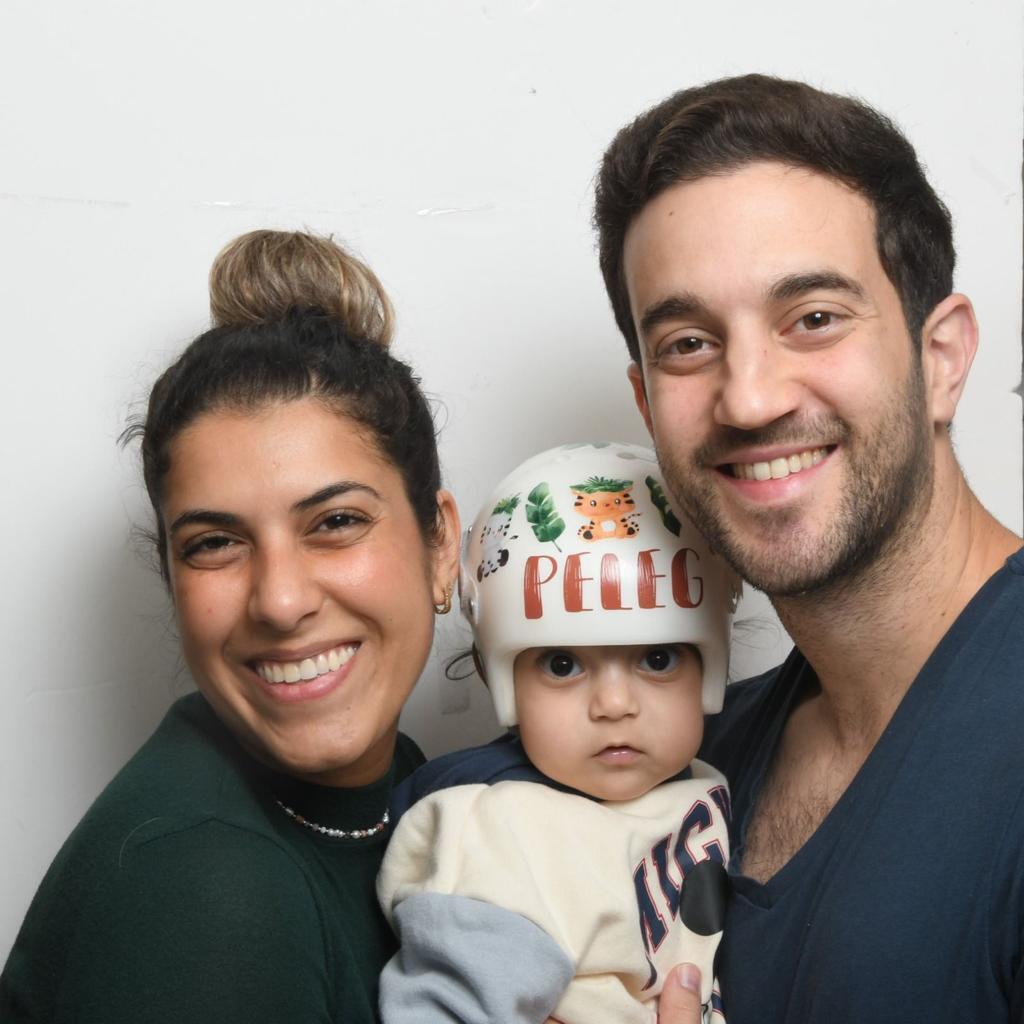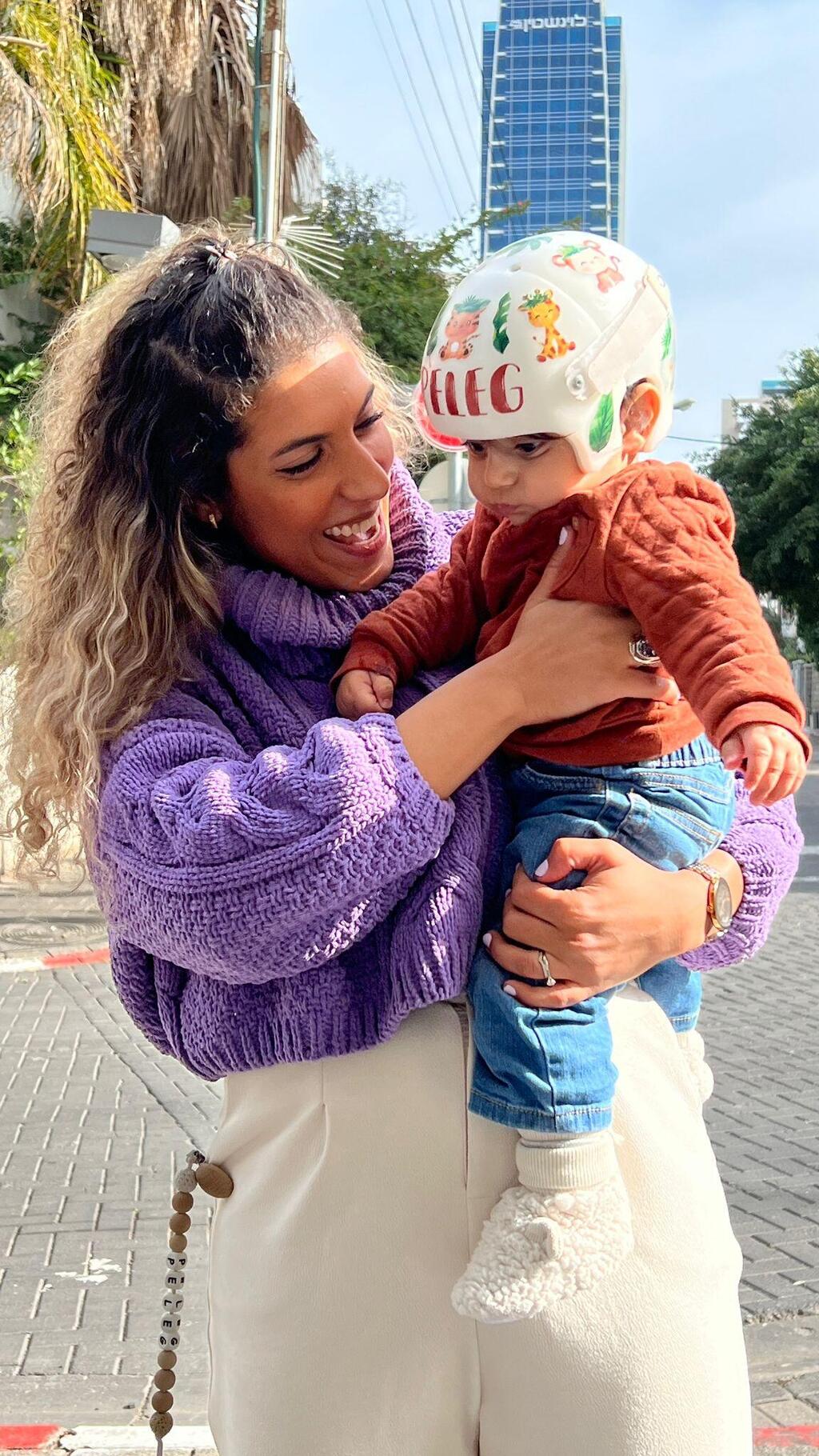At only 9 months old, Peleg Rothschild is already a member of "Heroes with Helmets", a project established at Schneider Children's Medical Center in Petah Tikva for parents of babies born with skull deformities.
As parents of infants that have already been through the process meet parents that are apprehensive about what's to come, it creates a useful, informative dialogue along with long-lasting friendships.
After almost five months, Peleg has ceremoniously removed his helmet and placed it near the dresser with the aid of his mother Gal, 29, and his father Assaf, 30.
"Purim is just around the corner, so without the helmet, we'll have to come up with a new costume," Gal says. "Still, it's very much worth it to us."
Head of Pediatric Neurosurgery at Schneider Children's Medical Center Dr. Amir Kershenovich, says that anywhere between 10% and 20% of babies are born with skull deformities to some degree. Sometimes it's diagnosed by a pediatrician, other times by the parents themselves.
The condition, known as positional plagiocephaly, occurs when specific areas of an infant's head develop an abnormally flattened shape and appearance. Occipital plagiocephaly causes a flattening of one side of the back of the head and is often a result of the infant consistently lying on his or her back.
A sweet, smiling little boy, Peleg has recently undergone the corrective treatment with the helmet, on the back of which it says "King of the Jungle", with many animals painted on it. "He really is a king", his parents say proudly, while presenting photos of him looking like a tiny little astronaut.
"Peleg was born on May 31, 2022, at 11am at the Schneider Children's Medical Center," his mother Gal says. "We noticed something about his breathing was off, and I told Assaf that something about his skull doesn't look right, but he thought I was imagining it, so I let it go until we were referred to a neurosurgeon."
Thus, tiny Peleg was diagnosed with craniosynostosis, a birth defect in which the bones of the baby's skull join together too early. This happens before the baby's brain is fully formed. As the baby's brain grows, the skull can become more misshapen.
Having gone through a miscarriage once before, the fact that the fetus did not breathe or move just one month before birth, made Gal anxious. "We decided on Caesarean as soon as possible. I wasn't about to lose a second child," she said.
At the Neonatal Intensive Care Unit, Gal thought something was off about the baby's skull, to which Assaf said: "He's perfect, you're just looking for problems."
"The doctor said temporary deformities happen when the baby goes through the birth canal and it straightens out on its own," Gal recounts. "But then, I remembered - it was a Caesarean. He never went through the birth canal!"
A different doctor noticed something as well and consulted their colleagues. That's when Dr. Kershenovich entered the picture. "He told us we had two options. One is invasive and involves breaking some bones for realignment, and the second option was non-invasive, using a helmet. We thought about it and went with the helmet.
"Babies are resilient," Gal says. "While the helmet bothered him at first, Peleg eventually got used to it and we made it into a cool accessory so he'd love being with it."
As the treatment progressed, Gal set up an Instagram account in which she documented the treatment. She left her job as a brand manager at a fashion company and made a career shift, accompanying parents going through the same thing, along with studying infant massage and creating listening circles for parents.
"A therapist told me I should work with babies. I thought she was crazy, but after Peleg was born, I realized I was meant to do this. The passion for it burned inside of me. It's calling. It's what I'm on this Earth for," Gal said.
"Initially, I was scared to death. I didn't know the first thing about how to handle the helmet and how to clean it. I had a pamphlet from the hospital that wasn't nearly enough.
Then they recommended the 'Heroes with Helmets' Facebook group, and I finally felt like I found a place where I can speak to people about what I was going through. Now, I feel good helping anxious parents and showing them it's not the end of the world."
Gal then started sharing little Peleg's process on Instagram. "Parents fear this condition will cause developmental problems for their child, and I tell them they'll reach all of their milestones, but everyone progresses at their own pace," she said.
"In the discussions I lead, I see parents crying as they're coming in and full of smiles and hope as they leave. They realize they have a unique child, and it's worth acknowledging them as such. We grow stronger together."
Gal has been passionate about raising awareness regarding both plagiocephaly and craniosynostosis so that parents of babies with these conditions know that it's well-known and fixable.
Why do you speak of 'normalizing' it?
"People tend to give odd looks, so it makes you as a parent feel like something is not normal with your child. When I'm outside with him, I deal with insensitive comments. Other parents are afraid to leave the house and go off the radar for months. People need to understand that wearing a helmet doesn't mean the child is suffering."
4 View gallery


Dr. Kershenovich and Dr. Olshinka with little Peleg
(Photo: Schneider Children's Medical Center)
Dr. Kershenovich says the helmet is a very efficient solution, provided the child is up to six months old. "The first year of life is the formative year for the child's skull development. After that, bones harden. The helmet holds the deformity into place, thus 'forcing' the skull to develop normally, as the brain pushes the flat part of the skull into a more round, normal shape," he says.
"There's another, more infrequent reason to use the helmet and that's craniosynostosis, which happens once every 3,000 births. Untreated, it could lead to increased cranial pressure, vision deficiencies, cognitive impairments and more."
This unique clinic at the Schneider Children's Medical Center is led by both Dr. Kershenovich and Dr. Assaf Olshinka, a board-certified plastic and aesthetic surgeon and member of the Israel Medical Association and the Israeli Society for Plastic and Aesthetic Surgery.
The two brought the treatment to Israel from their time working as pediatricians in the United States.




